More like this...
Wec Le Mans - KR'89 Commodore 64 game
WEC Le Mans: A Classic Racing Simulation
Developer(s): Konami, Technostar/Coreland, Alpha Denshi
Publisher: Konami
Platform(s): Arcade, Amstrad CPC, Commodore 64, MSX, ZX Spectrum
Release Date: September 1986
Genre: Racing Simulation
Arcade System: Konami Dual 68000
Introduction:
WEC Le Mans, also known as WEC Le Mans 24 in Japan, is a groundbreaking racing simulation video game that hit arcades in 1986. Remarkably, it was the first racing game to faithfully depict the grueling 24 Hours of Le Mans World Endurance Championship (WEC). Players are treated to an immersive experience as they navigate the iconic Circuit de la Sarthe, complete with dynamic day-night transitions.
Gameplay:
WEC Le Mans sets out to provide an authentic driving experience, aiming to simulate the intricacies of real car handling. Players find themselves in control of a race car that realistically responds to every nuance of the track. This includes dramatic jumps, sharp turns, and thrilling spins of up to 180 degrees. The gameplay emphasizes the importance of acceleration, braking, and gear shifting, coupled with the essential skill of counter-steering to prevent spin-outs.
Moreover, the game incorporates painstakingly recreated Le Mans circuits, endorsed by the Automobile Club de l'Ouest. To enhance immersion, the game features force feedback technology, delivering a tactile experience through a vibrating steering wheel that reacts to acceleration and off-road terrain.
However, mastering WEC Le Mans is no easy feat. The track consists of a fixed three-lane width, and even the slightest contact with another vehicle can result in a dramatic spin or even a spectacular mid-air flip. Straying off-course and taking a wide turn can also lead to a spin.
Players are challenged to continue racing until their timer expires or they successfully complete four consecutive laps, which concludes the game.
Arcade Cabinet:
Konami's dedication to delivering a unique gaming experience shines through the variety of arcade cabinet versions. These include an upright machine, a sit-down cockpit, and the deluxe arcade version known as the 'big' spin. The latter, a true standout, features a 360° spinning base that physically turns players left or right, mirroring the car's movement. The front of the 'big' spin arcade cabinet even resembles a Prototype C Race car.
It's worth noting that the arcade cabinet was considered quite expensive for its time, boasting a price tag of £7000 in 1986, which translates to approximately £21,821 or $30,324 in 2023.
Porting Adventures:
WEC Le Mans ventured into the realm of home computers through ports created by Imagine Software (as Imagine Studios). These ports brought the Le Mans experience to platforms like Amstrad CPC, Commodore 64, MSX, and ZX Spectrum. Although there were rumors of a 16-bit version for the Amiga and Atari ST, these plans never materialized.
Reception:
WEC Le Mans enjoyed both commercial success and critical acclaim in arcades. In Japan, it earned the honor of being the most successful upright arcade unit in January 1987, as reported by Game Machine. The spin cabinet version further solidified its success by becoming the fourth highest-grossing upright/cockpit arcade game of 1987 in Japan, trailing only Out Run, Super Hang-On, and Darius.
The game's arcade version received praise upon its debut at the Preview '87 show in September 1986. Computer and Video Games lauded WEC Le Mans as a fast and realistic racing simulation, with reviewer Clare Edgeley hailing it as the most exhilarating game she had played in months. The game was favorably compared to Out Run for its superior movement.
During the ATEI (Amusement Trades Exhibition International) show in January 1987, both Out Run and WEC LE Mans took the spotlight, captivating attendees with their thrilling gameplay.
WEC Le Mans continued to impress in subsequent reviews. In Sinclair User, Clare Edgeley reiterated her praise, describing the game as the most sophisticated and thrilling she had ever encountered. The unique movement system, which simulated every action, garnered particular acclaim.
While WEC Le Mans faced tough competition, including the popular Out Run, it managed to establish itself as a superb driving simulator with its own distinct charm.
Conclusion:
WEC Le Mans left an indelible mark in the world of arcade gaming, offering a unique and challenging racing simulation experience. Its attention to realism, dynamic gameplay, and immersive arcade cabinet variations earned it a special place in the hearts of gaming enthusiasts.
The game's successful transition to home computers, coupled with critical acclaim, further solidified its status as a classic. WEC Le Mans remains a testament to the innovation and dedication of its developers at Konami, ensuring its enduring legacy in the annals of gaming history.
Reception (Ports):
Review Scores:
- C64: ACE - 841/1000, Computer and Video Games - 82%, Crash - 66%, The Games Machine - 14%, Sinclair User - 91%, Your Sinclair - 9/10
- CPC: ACE - 832/1000, Computer and Video Games - 83%, The Games Machine - 61%
- ZX: Crash - 66%, The Games Machine - 61%
Awards:
- Your Sinclair: Megagame
The Spectrum version of the game also received critical acclaim and enjoyed commercial success, securing a fourth-place spot on the UK Spectrum chart in May 1989.
WEC Le Mans continues to be celebrated for its innovative gameplay and unique arcade experiences. Its influence can even be seen in Konami's later game, Speed King, which was inspired by the groundbreaking WEC Le Mans.
The Spanish magazine Microhobby provided the following scores for the game:
Originality: 30%
Graphics: 70%
Motion: 80%
Sound: 50%
Difficulty: 80%
Addiction: 80%
Game category: Commodore 64 games
Recently played

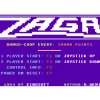


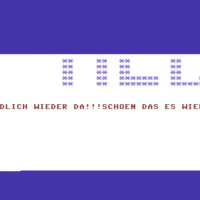





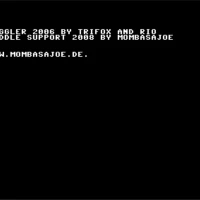



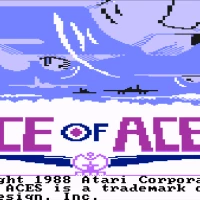
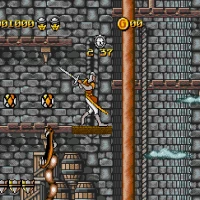
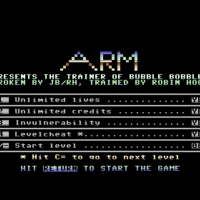

Comments